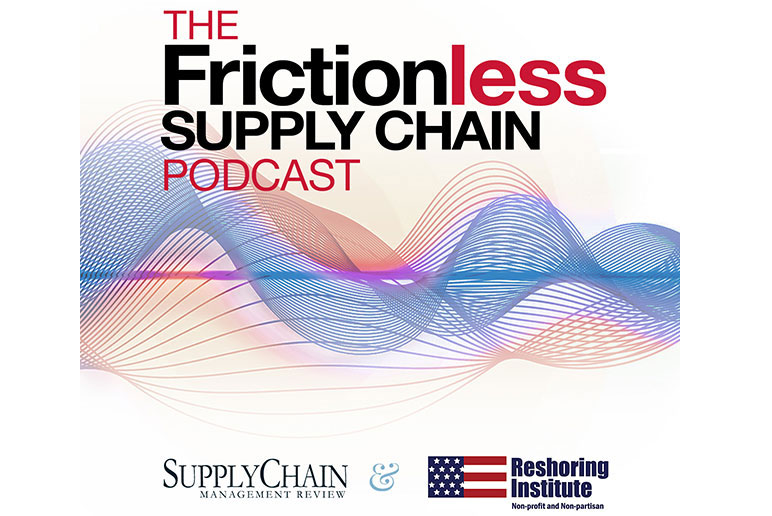North American “big box” warehouse transactions by retailers and wholesalers saw significant gains in 2021, setting a record for the second straight year, according to a report recently issued by industrial real estate firm CBRE.
CBRE defines “big box” warehouses as being 200,000 square-feet (SF) or larger.
In its “North American Overview,” CBRE looked at the 23 “most dynamic” North American big box markets, finding that big box transactions represented 450 million SF across these markets (in the United States, Canada, and Mexico), marking a 29% annual gain over 2020’s 350 million SF.
What’s more, CBRE observed that bog box vacancy rates dropped to a record-low 3.4% in 2021, below 2020’s 4.6%, with four markets having vacancy rates below 1%, paced by Los Angeles at 0.2%, as average first year rents rising from 2020’s $5.19 to 2021’s $6.03.
And it added that 2021 construction completions came in at 187.7 million SF in 2021, down from 2020’s 194.4 million SF (MSF), but that comes with the caveat that there “some relief may be found in the construction pipeline,” which is at 323.9 million SF, the firm noted.
From a market perspective, CBRE said Chicago was leader in 2021, for total big box square feet leased, at 59.4 MSF, with Inland Empire (49.3 MSF), Southern NJ-Eastern Pennsylvania (48.7 MSF), Dallas-Fort Worth (44.5 MSF), and Northern-Central NJ (29.7 MSF) rounding out the top five North American markets.
“Occupiers leased an unprecedented amount of industrial space to serve a rapidly growing online consumer space and increase safety stock to counter supply chain disruptions over the past year,” the report stated. “All sizes and types of industrial real estate performed well in 2021 but none more so than the big box sector. A diverse set of occupiers increased their presence in big-box facilities last year to serve growing populations, be near expanded logistics hubs and take advantage of new government incentive programs.”
James Breeze, CBRE Senior Director, Global Head of Industrial & Logistics Research, said in an interview that there were various major drivers behind 2021’s record-breaking activity, including:
-occupying more space to service a growing online consumer base;
-occupying more space to increase and protect domestic inventories; and
-occupying more space to cut down on long transportation times and thus higher transportation costs
“Those drivers of demand remain today,” he explained. “While it’s difficult to know how long this level of demand will last, we expect activity this year to be on par with 2021. Early 2022 data points to occupiers in the medical, construction, and 3PL industries increasing their market share this year.”
When asked if the limited inventory situation could hinder future activity, Breeze observed that there is a record 323 million sq. ft. of big-box product under construction which is welcome in a sector given the 3.4% vacancy rate.
“This increased inventory will help transaction volume remain at 2021’s level,” he said. “Despite increases in development, there are land constraints in markets including Los Angeles County, Inland Empire, and Northern/Central New Jersey. While these are markets occupiers want and need to be in, the lack of available space will drive some big-box occupiers into surrounding markets including Southern New Jersey/Eastern Pennsylvania, Phoenix, and California’s Central Valley, which have more land for development.”
In terms of transactions, which CBRE said include leases and user sales, the report found that retailers and wholesalers led the way, in 2021, coming in at 35.8% of total activity, topping 2020’s 24.7%, replacing the 2020 leader, e-commerce-only users, whom came in third in 2020, at 10.7%, off from 2020’s 27.1%. 3PLs stayed in the second spot, rising from 25.8% in 2020 to 32.2% in 2021.
“General retailers and wholesalers are a much larger occupier set compared with companies that only deal with online sales and distribution,” said Breeze. “General retailers and wholesalers handle both brick and mortar and e-commerce sales. They include the actual retailers and their direct suppliers. We saw a much more diverse tenant set, whether it be retailers or suppliers, expand locations in 2021 because of the demand drivers I previously mentioned. This is why the market share for this occupier type is much higher.”
SC
MR

Latest Supply Chain News
Latest Resources

 Explore
Explore
Latest Supply Chain News
- Geopolitical readiness in supply chains: Strategic challenges for leaders
- Unlocking retention: The role employee engagement plays
- Can supply chain managers embrace an entrepreneurial mindset?
- Challenges to ESG reporting
- With capacity to spare, logistics real estate demand remains subdued
- Tariffs, taxes and trade: The impact of Trump’s reelection on the supply chain
- More latest news
Latest Resources

Subscribe

Supply Chain Management Review delivers the best industry content.

Editors’ Picks




